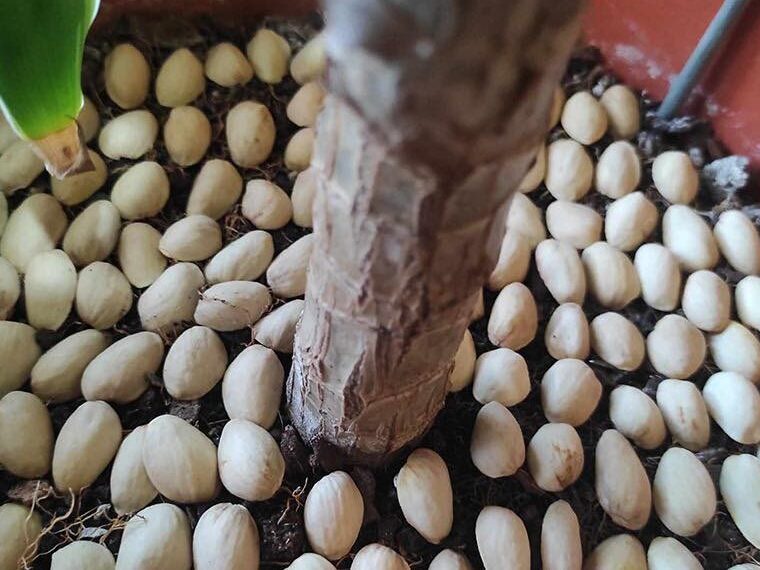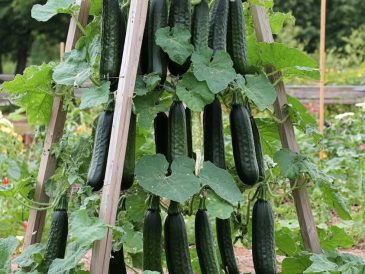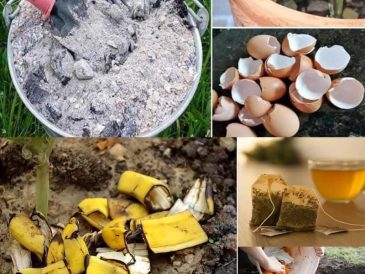Cracking open pistachios and enjoying the salty, crunchy nut inside is one of life’s little pleasures. But what do you usually do with the empty pistachio shells? If you’re like most people, you probably throw them away without a second thought.
Here’s the good news: those shells are far more valuable and useful than you think.
Pistachio shells are naturally durable, biodegradable, and rich in texture, making them perfect for a variety of home and garden uses.
From improving soil health and keeping pests at bay to crafting elegant décor, these discarded shells deserve a second life.
Let’s explore 7 brilliant reasons to never throw away pistachio shells – and how to use them effectively and safely.
1. Enhance Drainage in Plant Pots
One of the most practical uses for pistachio shells is improving drainage in container gardens. Poor drainage is one of the top killers of houseplants and potted herbs, often leading to root rot and fungal problems.
Pistachio shells offer a simple, eco-friendly solution.
How it works:
- Place a layer of clean, unsalted pistachio shells at the bottom of your plant pot before adding soil.
- The shells create space for water to flow through, preventing it from pooling at the roots.
Benefits:
- Natural and biodegradable alternative to stones or synthetic fillers
- Lightweight, making pots easier to move
- Slowly decomposes, enriching the soil over time
This method is especially helpful for houseplants, herbs, succulents, and vegetable starts in pots.
Bonus Tip: Combine pistachio shells with compost or potting mix to help improve aeration.
2. Repel Garden Pests Naturally
Pistachio shells are a surprisingly effective natural pest deterrent. Their sharp, jagged texture makes them unappealing for soft-bodied insects like slugs, snails, and cutworms.
How to use:
- Crush the shells slightly to break them into irregular pieces.
- Scatter a ring around your vegetable plants, flowers, or herbs.
- Reapply after heavy rainfall or watering.
Additional benefits:
- Discourages burrowing and digging animals like squirrels, raccoons, and cats
- Provides a barrier without using chemical pesticides
Pistachio shells are non-toxic and safe for kids and pets, making them a great choice for organic gardening.
Important: Only use unsalted shells – salt can harm your plants and soil.
3. Add to Compost for Long-Term Soil Health
Composting is one of the best ways to reduce household waste while creating nutrient-rich soil for your garden.
Pistachio shells may take longer to break down than food scraps, but they’re still an excellent source of carbon (brown material) in your compost pile.
How to compost pistachio shells:
- Rinse to remove salt and seasoning
- Break into smaller pieces with a hammer or kitchen mallet
- Mix with nitrogen-rich materials like vegetable scraps or grass clippings
Composting benefits:
- Adds structure to your compost pile
- Helps balance moisture and air circulation
- Reduces waste while supporting healthy soil microbes
Although pistachio shells decompose slowly, they contribute to long-lasting humus that improves soil texture and water retention.
4. Use as a Natural Fire Starter
Thanks to their dense structure and natural oils, dry pistachio shells are ideal for starting fires in your fireplace, wood-burning stove, or outdoor fire pit.
How to make fire starters:
- Collect a handful of dry shells
- Place under logs or kindling
- Light with a match – no need for chemical firelighters
Why they work:
- Burn longer than paper
- Ignite easily and provide a steady flame
- Leave minimal ash
This is a great way to reduce waste while warming your home or enjoying an evening outdoors.
Safety Tip: Don’t use pistachio shells from salted nuts in your fireplace – the salt can corrode metal parts over time.
5. Create Eco-Friendly Mulch
Mulch is essential for healthy garden beds. It conserves moisture, regulates soil temperature, and suppresses weeds.
Pistachio shells make a long-lasting and visually unique mulch for both decorative and vegetable gardens.
How to use:
- Spread a layer of clean shells 1–2 inches deep around the base of plants or in flower beds.
- Leave space around the plant stem to prevent rot.
- Mix with wood chips or straw for texture variation.
Advantages:
- Slow decomposition = less frequent replenishing
- Deters pests and digging animals
- Adds an eye-catching element to garden aesthetics
Pistachio shells eventually break down and release trace minerals back into the soil, supporting plant health over time.
6. Use in Creative Home Décor and Crafts
Looking for a fun, zero-waste crafting idea? Pistachio shells are a versatile material for making rustic, natural-looking decorations and handmade gifts.
Craft ideas:
- Flower art: Glue shells into layered flower patterns and paint them
- Mosaics: Add shells to wooden boards for textured art
- Holiday ornaments: Turn shells into stars, wreaths, or trees
- Decorative bowls or vases: Glue shells around glass containers for a rustic look
Tips for crafting:
- Wash and dry shells thoroughly
- Use hot glue or eco-friendly adhesive
- Paint, stain, or dye shells for a custom finish
These crafts are not only beautiful but also a great way to engage kids and reduce household waste.
7. Make Natural Potpourri and Air Fresheners
Pistachio shells are porous, which means they can absorb and retain fragrances. You can use them to make natural, long-lasting potpourri that freshens up small spaces like bathrooms, drawers, or closets.
How to make pistachio shell potpourri:
- Clean and dry the shells
- Soak them in a mixture of essential oils, herbs, and spices (e.g., lavender, cinnamon, clove)
- Let dry completely and mix with dried flowers or orange peels
- Store in breathable sachets, bowls, or jars
The shells release fragrance slowly and make a great zero-waste addition to any room in the house.
How to Prepare Pistachio Shells for Reuse
Before using pistachio shells in any project, make sure to:
- Rinse thoroughly to remove salt, seasoning, or oil.
- Dry completely to prevent mold or mildew.
- Break into smaller pieces if needed for compost, crafts, or pest control.
Store in a dry container or breathable bag until you’re ready to use them.
What Not to Do with Pistachio Shells
While pistachio shells are versatile, there are a few precautions to keep in mind:
- Don’t use salted shells in your garden – excess sodium can damage plant roots and alter soil chemistry.
- Avoid using colored shells in compost – some dyes may contain chemicals.
- Don’t add too many to compost at once – they break down slowly and can disrupt the carbon-nitrogen balance.
Stick to small batches and clean shells for best results.
Pistachio shells may seem like an afterthought when you’re snacking, but they’re actually a powerful, zero-waste resource hiding in plain sight.
With just a little effort, you can turn this byproduct into a valuable material for your plants, your fireplace, your craft table, and your entire household.





